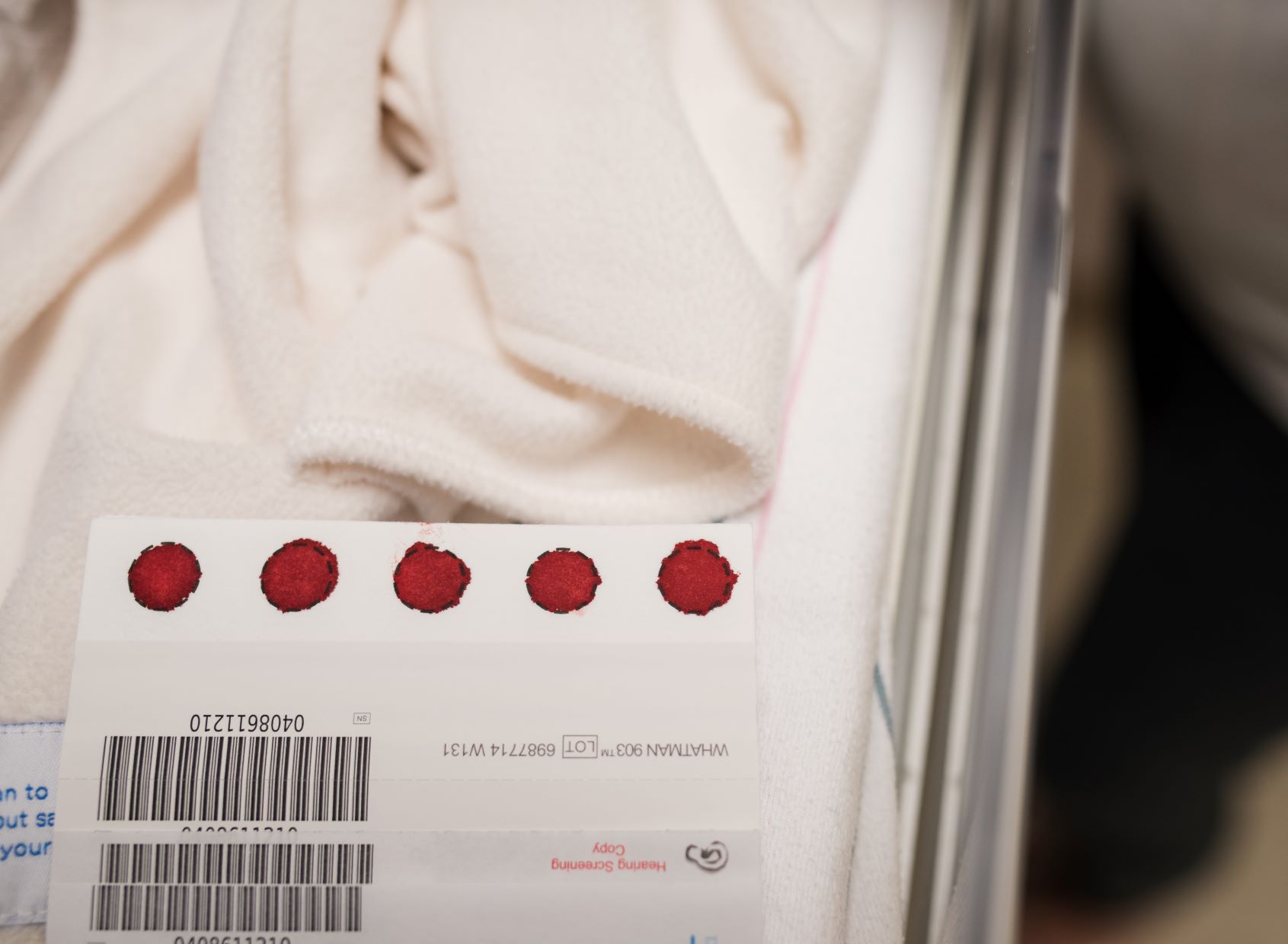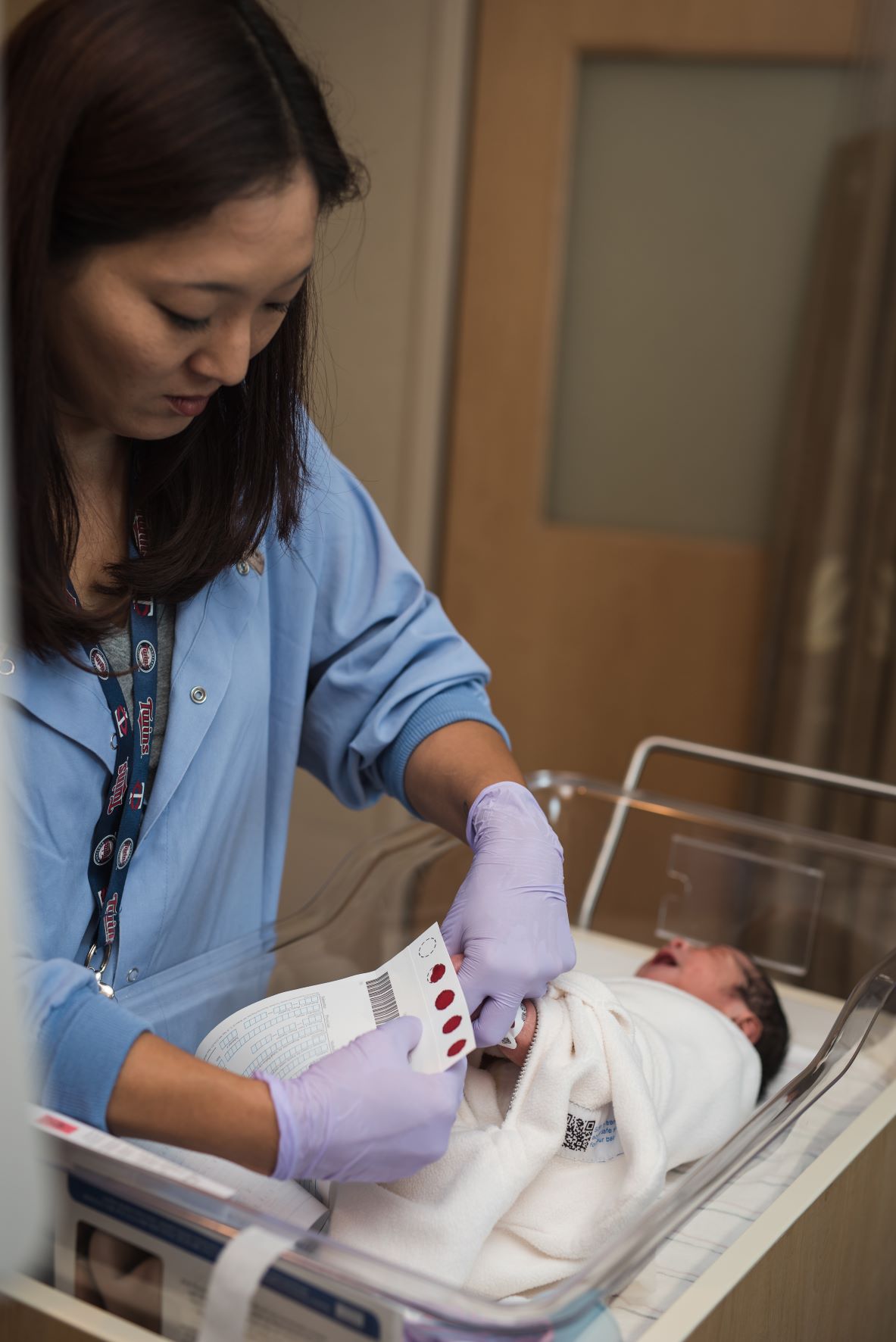2025 Public Health Laboratory Newsroom
60 Years, Hundreds of Newborns Helped: A History of PKU Screening
Almost every baby born in Minnesota undergoes routine screening for more than 60 health conditions. This practice, known as “newborn screening,” began in Massachusetts in 1963. In 1964, the Minnesota Department of Health and other health departments across the United States began testing babies’ blood samples for signs of phenylketonuria (PKU).
 PKU is a genetic disorder in which an enzyme does not break down the amino acid phenylalanine correctly. Phenylalanine then collects in the blood, which can lead to a lifetime of developmental disabilities and seizures. Newborns with PKU almost never show any outward signs of having the disorder. It can only be diagnosed by analyzing a blood sample for phenylalanine.
PKU is a genetic disorder in which an enzyme does not break down the amino acid phenylalanine correctly. Phenylalanine then collects in the blood, which can lead to a lifetime of developmental disabilities and seizures. Newborns with PKU almost never show any outward signs of having the disorder. It can only be diagnosed by analyzing a blood sample for phenylalanine.
There is no cure for PKU, but if diagnosed early, it can be managed so that symptoms never arise. People with PKU take medications and have special diets that avoid phenylalanine. Many food labels now state if their contents contain phenylalanine.
The birth of newborn screening
In the late 1950s, University of Minnesota Medical School graduate Dr. Robert Guthrie was working as a microbiologist at the State University of New York in Buffalo. His niece had PKU, and his son also had developmental disabilities. He sought to make PKU easier to diagnose.
 Dr. Guthrie developed an inexpensive screening test that involved collecting drops of blood from a baby’s heel on dried filter paper. Then he applied specific bacteria that consumes phenylalanine to the spots of blood. If the bacteria flourished, the blood spots would go to specialists for more extensive testing. Only these specialists could make a final diagnosis of PKU.
Dr. Guthrie developed an inexpensive screening test that involved collecting drops of blood from a baby’s heel on dried filter paper. Then he applied specific bacteria that consumes phenylalanine to the spots of blood. If the bacteria flourished, the blood spots would go to specialists for more extensive testing. Only these specialists could make a final diagnosis of PKU.
Dr. Guthrie’s breakthrough enabled state health departments across the country to start programs that aimed to screen every newborn for PKU. Since 1964, the Minnesota Department of Health has found hundreds of positive results that led to PKU diagnoses. From 2017 through 2024 alone, the Minnesota Newborn Screening Program saw 78 positive results from PKU screening. Further testing led to 32 confirmed diagnoses of “classic PKU,” while 7 others were diagnosed with hyperphenylalaninemia, a less severe form of the disorder.
Expanding to more than 60 conditions
PKU is no longer the condition that results in the most positive newborn screening tests in Minnesota. Still, some people call blood spot screening “the PKU test,” even though nearly all of the 60 conditions in the Minnesota Newborn Screening Panel are screened for by analyzing blood spots. Dr. Guthrie’s innovation remains central; blood spot screening still starts with collecting drops of blood from a newborn’s heel on paper.
 Collecting blood spots may not have changed dramatically in 60 years, but technological advances have allowed screening to expand well beyond PKU. Laboratories no longer use bacteria that consume phenylalanine. Now, a technique called “tandem mass spectrometry” gives more accurate results for PKU screening while simultaneously conducting tests for dozens of other conditions. After the Minnesota Newborn Screening Program adopted tandem mass spectrometry in 2001, the Newborn Screening Panel expanded by more than 15 conditions.
Collecting blood spots may not have changed dramatically in 60 years, but technological advances have allowed screening to expand well beyond PKU. Laboratories no longer use bacteria that consume phenylalanine. Now, a technique called “tandem mass spectrometry” gives more accurate results for PKU screening while simultaneously conducting tests for dozens of other conditions. After the Minnesota Newborn Screening Program adopted tandem mass spectrometry in 2001, the Newborn Screening Panel expanded by more than 15 conditions.
Now the Minnesota Newborn Screening Program handles hundreds of positive screens for 60+ conditions every year. Its work goes beyond processing tests. When screens yield positive results, genetic counselors contact the affected newborns’ primary care providers so they can connect with specialists for further testing and lay out plans for the newborns’ families. PKU should be addressed within weeks but is not the most time-critical condition. Galactosemia, for example, requires immediate attention to spare newborns from severe symptoms.
Dr. Robert Guthrie’s quest to make an inexpensive PKU screening test proved monumental. It opened the door to thousands of babies across the world receiving early diagnoses of treatable conditions. The Minnesota Newborn Screening Program proudly continues the tradition of helping families keep children healthy.
Return to the 2025 Public Health Laboratory Newsroom.